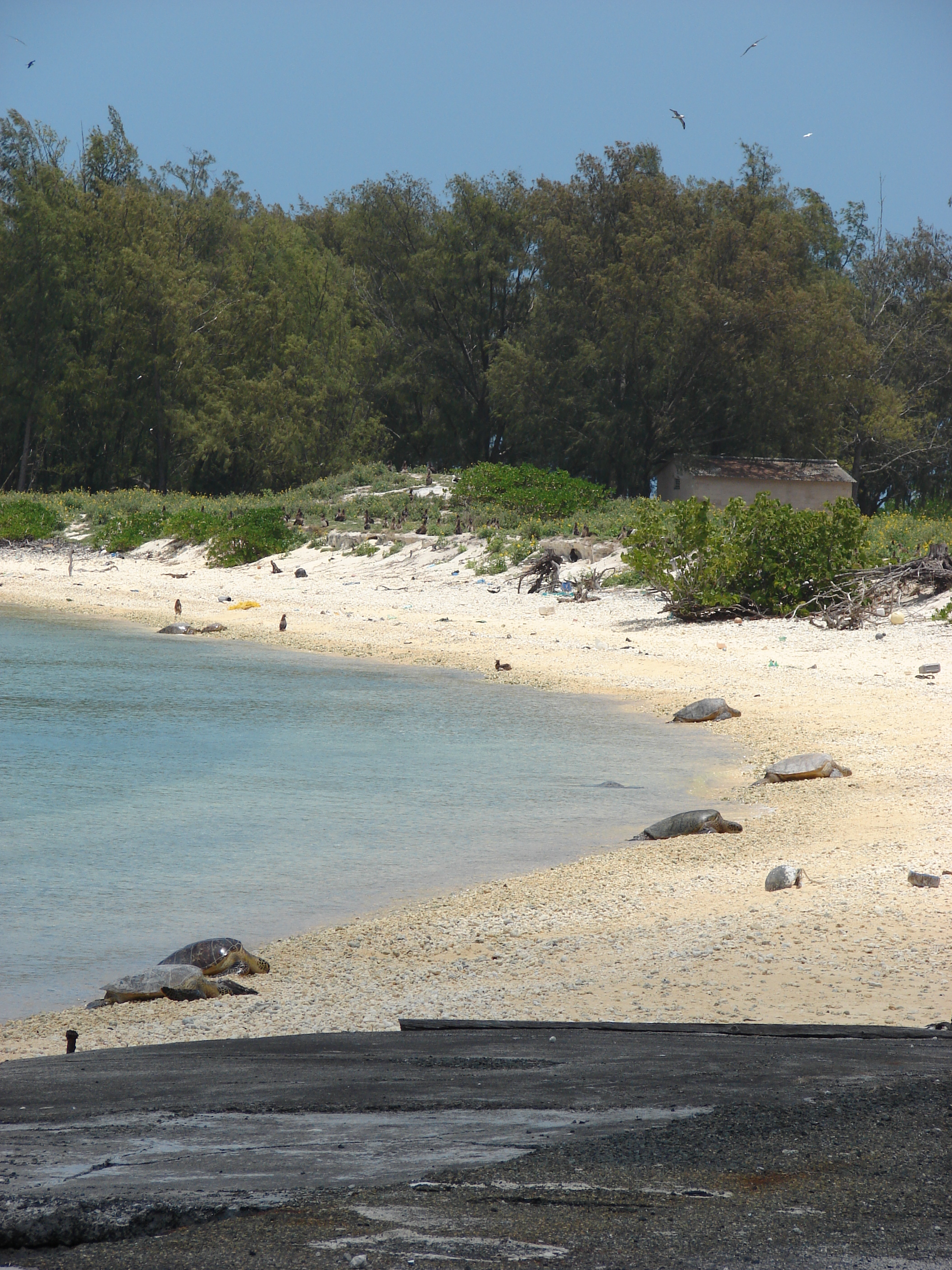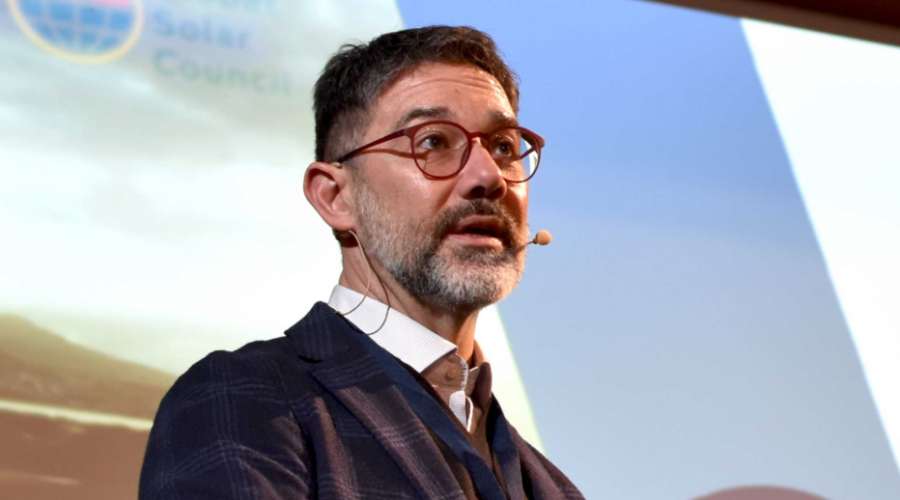The request could inhibit protections in areas set aside, in part, for dwindling fish populations to recover.
MANAGERS OF THE American fisheries operating in the Pacific Ocean have asked President Donald Trump to open four national marine monuments to commercial fishing—a request that could inhibit protections in areas set aside, in part, for dwindling fish populations to renew themselves.
The Western Pacific Regional Fishery Management Council is a quasi-governmental body that sets the fishing seasons and annual catch limits. The council, also known as WESPAC, told the president that “quick action is urgently needed” to meet “exceptionally high retail demand” for canned tuna as a result of the global coronavirus pandemic.
“[W]e note that the fishing restrictions in the Pacific marine national monuments are impeding America’s three main tuna fisheries in the Pacific and the StarKist tuna cannery in American Samoa from operating at optimal levels and that these fishing restrictions are unnecessary as they have no proven conservation benefit,” Kitty Simonds, the council’s executive director, wrote to Trump in a letter dated May 8.
The request from the council arrived in Washington a day after Trump signed an executive order unveiling a broad initiative aimed at promoting economic growth and competitiveness of the U.S. seafood industry. The order included an invitation to the eight regional fishery management councils in the United States to recommend ways to reduce regulatory burdens on domestic fishing.
The WESPAC request to undo restrictions in the marine national monuments, if granted by Trump, could have far-ranging consequences. It will almost surely set off a political battle in Congress and a legal battle in court over the limits of presidential powers. Two lawsuits seeking clarity on presidential authority regarding national monuments are already in federal court before separate judges and some experts watching monument politics wonder if the Trump administration has the appetite to launch a third.
“So far, we’re not expecting that much is going to come of this request. But if it does, we’re prepared to go to court,” says David Henkin, an attorney in the Honolulu office of Earthjustice, an environmental organization that campaigned to establish the largest Pacific marine monument. “President Trump is without executive authority to open up monuments to fishing, and can’t dismantle them in a piecemeal fashion.”
Neither executives at WESPAC nor the National Oceanic and Atmospheric Administration responded to requests for interview. NOAA, in a statement, said the president’s new seafood program will “propel the United States forward as a seafood superpower.”
Tuna catch improves with monument expansion
WESPAC’s claim that the restrictions on fishing in the monuments have brought economic hardship to the tuna fleet is the subject of a long-running debate. In an effort to clarify the issue, a team of economists and scientists published a study in Nature earlier this year that found the monuments’ expansion had “little if any negative impacts” on the catch. In fact, the team found that Hawaii’s longline fleet caught more fish after the monuments were expanded.
“Opening up the marine national monuments to fishing would be like opening up Yellowstone National Park to industrial-scale hunting,” says Enric Sala, a marine biologist and the founder of National Geographic’s Pristine Seas program, who helped with both the creation and expansion of the Pacific Remote Islands monument.
Henkin adds that the pandemic does not provide a justification for expanding fishing because the issue created by COVID is not one of lack of supply, but lack of demand.
“There is a glut of fish rotting in the fish markets in Honolulu,” he says. “Demand for ahi tuna has plummeted as all the hotels and restaurants have closed. The boats aren’t out fishing not because the monuments are close to them, but because they’re not making any money.”
Legal fight over presidential powers
Presidents have held the power to protect federal lands and water from development since 1906, when President Theodore Roosevelt signed the Antiquities Act into law. Since then, every president except Nixon, Reagan, and George H.W. Bush has created national monuments. The total now stands at 158 monuments, including the most recent addition, a 373-acre Civil War camp in Kentucky that President Obama designated as a National Historic Landmark in 2016 and Trump upgraded to monument status in 2018.
National monuments have been resized, abolished, and turned into national parks. But the presidential ability to alter monuments created by their predecessors, including altering their boundaries or prescriptive protections, has never been tested in court until now.
In 2017, Trump was sued by several environmental groups and Native American tribes after he shrank two monuments situated in southern Utah’s red rock country—the Grand Staircase Escalante, created by President Clinton in 1996, and Bears Ears, created by Obama in 2016. The two monuments comprised a combined total of 4.2 million acres. Trump made them nearly 4 million acres smaller in the largest reduction of federal land protection in the nation’s history.
A federal judge rejected the government’s effort to dismiss the suit, as well as its request to transfer the case from Washington, D.C., to a federal court in Utah. The latest round of briefs is due in June.
Meanwhile, in a lawsuit brought by several commercial fishing associations, the D.C. Circuit Court of Appeals last December rejected their claim that the Northeast Canyons and Seamounts Marine National Monument had been illegally created by President Obama in 2016. The court concluded that Obama acted within his authority as president to create the monument, which sprawls over nearly 5,000 square miles 130 miles off the coast of Cape Cod. It protects a collection of underwater canyons and mountains that date back 100 million years and is home to sea turtles, several species of whales, and deep-sea, cold-water corals.
Long history of opposition
All four Pacific marine monuments were created by President George W. Bush. In 2006, he designated the Northwestern Hawaiian Islands marine monument to protect ocean around the northwestern Hawaiian Islands out to the 200-mile limit of the exclusive economic zone (EEA). It was later renamed the Papahānaumokuākea Marine National Monument. In 2009, Bush created the other three: Rose Atoll marine monument, near American Samoa; Marianas Trench marine monument; and Pacific Remote Islands marine monument, a string of islands in the central Pacific off Hawaii.
Obama enlarged the Pacific Remote Islands marine monument in 2014 and Papahānaumokuākea in 2016, which he quadrupled in size, making them the fifth and third largest, respectively, marine protected areas in the world.
The Western Pacific fishery council has opposed both the monuments’ creation and expansion, calling them an infringement on its authority to regulate fishing in American Pacific waters. Jointly, the expanded monuments protect more than one million square miles—areas larger than Alaska, Texas, and California combined, and their sheer size served to bolster the fishing council’s claim that the monuments cause economic hardship to the tuna fishing fleet.
When Trump launched a study early in his term to hunt for land or marine monuments he could shrink, the council recommended scaling back the monuments, although only two—Rose Atoll and the Pacific Remote Islands marine monuments—were included in the final recommendations then-Interior Secretary Ryan Zinke presented to Trump. Trump did not act on recommendations. (Read more about the Western Pacific fishery council here.)
U.S. Rep. Ed Case, D-Ha., a long-time critic of the Western Pacific council’s fisheries management, says the request is unsurprising, given the council’s history, but nevertheless should be regarded as yet another threat to the protected areas.
“Some of the fishery councils do a very, very good job to manage fishing on a sustainable basis,” he says. “WESPAC is far more slanted on the extraction side of the equation, and I have long been concerned. The desire to open up marine monuments and manage fisheries on borderline sustainability is not the solution.” The president’s executive order asked the fishery councils to submit recommendations within 180 days. They are due November 8, Election Day.
__
Read here the original news












